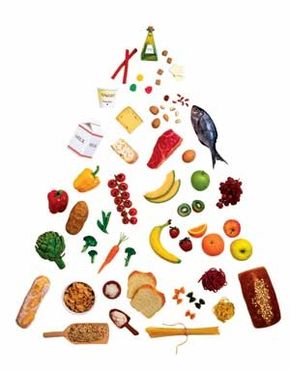The low-fat diet plan has become a popular choice among dieters in recent years. We present you with two different low-fat diet plans to help you decide what is best for you.
Choose To Lose Diet: The Premise
Nancy and Ronald Goor have been writing and rewriting their Choose to Lose series for the past 15 years. Billed as a "food lover's guide to permanent weight loss," this 500+ page volume tells you everything you need to know, and more, about eating healthy and losing weight. Taking the opposite tact of many diet books, Choose to Lose encourages carbohydrate consumption, as long as most of it comes from fruits, vegetables, and whole grains. The focus of the diet is fat: finding it, counting it, and budgeting it. It explains how to plan your own personal fat budget, read food labels, ferret out the fat in the foods you eat, fat-proof your home, eat out healthfully, and switch to healthy fats.
Advertisement
They encourage dieters to keep a food diary, at least in the beginning, to learn about their own food habits and to reveal their weaknesses. One of the reasons the book is so long is that it provides a comprehensive food table with the nutrient content of each food, plus discussions of everything, literally, from soup to nuts. The information tells dieters what's good (low-fat, high-fiber, and most nutritious), what's bad (high-fat, low-fiber, empty calories) and how you can plan your new diet to keep some of your favorite foods on your weight-loss menus.
What's for Breakfast, Lunch, and Dinner? The Goors' diet provides more information about specific foods than most other diets, and it gives a week's worth of sample menus and recipes. More than 250 of the book's pages are devoted to food tables that give the calorie, fat, and saturated fat content of foods. You'll find brief, informative sections on such foods as bread, potatoes, cereals, chicken, seafood, popcorn, and pretzels, just to name a few. A typical day's menus might include oatmeal and whole-wheat toast with jelly, cottage cheese, strawberries, and skim milk for breakfast; chickpeas, whole-wheat pita, tangerine, carrot sticks, and orange juice for lunch; tortilla soup, chicken, green beans, rice, squash, cauliflower, nonfat yogurt, and blueberries for dinner; and nonfat yogurt and popcorn for snacks during the day. Total calories: 2,300. Guidelines are provided for cutting calories to 1,500 to 1,600 -- the minimum they recommend. Supplements are not recommended. Follow a balanced diet, they say, and supplements shouldn't be necessary.
Fact or Fiction: What the Experts SayInformation is power, and the Goors' plan provides dieters with power over their diets and, ultimately, their health. The diet plan goes hand-in-hand with what most experts currently recommend, and it meets the needs of seniors as well. It's a diet high in complex carbohydrate -- mostly from whole grains, fruits, vegetables, and legumes -- with limited fat intake, most of it from healthy fats such as olive oil. Though it's not billed as such, the diet is in line with dietary recommendations for reducing the risk of heart disease, diabetes, high blood pressure, and cancer.
Gains and Losses/What's the Damage?
If you follow the Goors' plan, using the recommended calorie adjustments, it should allow you to lose weight successfully. You get a lot of variety and choices on this diet, which also offers much-needed guidance for keeping the diet balanced and realistic. One chapter is devoted to exercise, which they sum up as "Eating Right + Exercise = Perfection."
Now let's consider another low-fat diet, the Eat More, Weigh Less program. Click to the next section to find out more.
This information is solely for informational purposes. IT IS NOT INTENDED TO PROVIDE MEDICAL ADVICE. Neither the Editors of Consumer Guide (R), Publications International, Ltd., the author nor publisher take responsibility for any possible consequences from any treatment, procedure, exercise, dietary modification, action or application of medication which results from reading or following the information contained in this information. The publication of this information does not constitute the practice of medicine, and this information does not replace the advice of your physician or other health care provider. Before undertaking any course of treatment, the reader must seek the advice of their physician or other health care provider.
Advertisement

